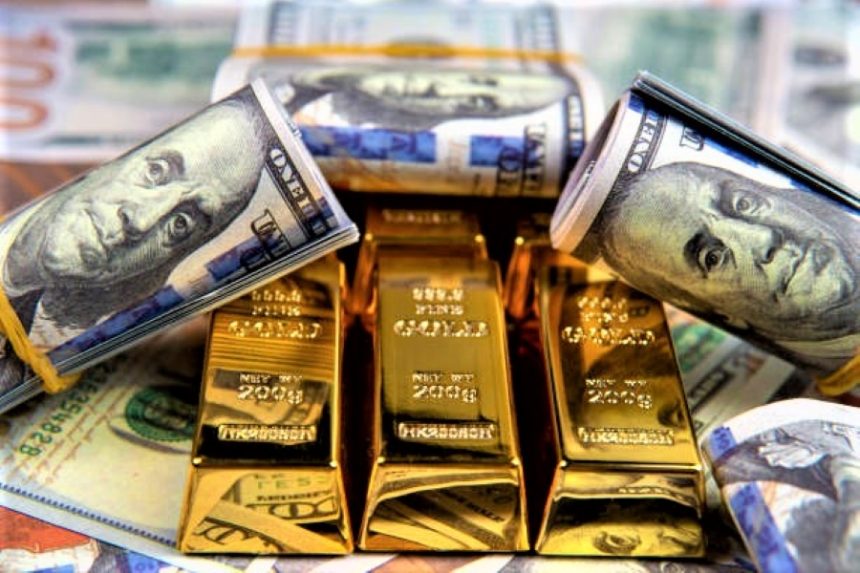The gold price (XAUUSD) edged lower in Wednesday’s early European session, reversing part of its recent rally from a two-week high near $3,395. The move was driven by profit-taking and a modest recovery in the US Dollar (USD), even as safe-haven flows provided some cushion amid rising concerns about the Federal Reserve’s independence.
Despite the pullback, analysts note that the yellow metal remains fundamentally supported as investors assess the shifting landscape of US monetary policy, political turbulence in Washington, and lingering geopolitical risks.
Profit-Taking and Dollar Strength Pressure Gold
After a sharp two-day rally, some traders locked in gains, leading to a mild retreat in gold prices. This coincided with a slight uptick in the US Dollar Index (DXY), which often moves inversely to gold.
However, market participants suggest that this pullback could be temporary, especially with upcoming US inflation data and central bank developments expected to steer sentiment in the days ahead.
“Gold remains in a consolidation phase, with dips being bought as uncertainty around the Fed and broader global tensions keep safe-haven demand intact,” said a London-based commodities strategist.
Fed Independence in the Spotlight
Political tensions are increasingly influencing financial markets. On Tuesday, President Donald Trump intensified efforts to reshape the Federal Reserve, declaring that he would soon hold a majority of nominees willing to support aggressive rate cuts.
Fed Governor Lisa Cook resisted calls to step down, asserting that the President has no legal authority to remove her. This escalating standoff has sparked concerns about the central bank’s independence, a factor that typically supports gold as a hedge against institutional uncertainty.
Bloomberg reported that Trump’s move came after allegations surfaced against Cook involving falsified mortgage documents. The President’s stance has signaled the potential for a prolonged legal battle, adding to the risk-off tone in the market.
Focus on US PCE Inflation Data
The next key macroeconomic catalyst for gold traders is the US Personal Consumption Expenditures (PCE) Price Index for July, due Friday. This metric, closely tracked by the Fed, is expected to show:
Headline PCE: 2.6% YoY
Core PCE: 2.9% YoY
A reading above expectations could limit the Fed’s flexibility to deliver rate cuts, potentially strengthening the dollar and applying pressure on gold in the near term. Conversely, softer data would boost expectations for policy easing and likely support gold prices.
Rate Cut Odds Climb Ahead of September Fed Meeting
Markets have quickly adjusted their rate expectations following recent comments by Fed Chair Jerome Powell, who signaled a possible rate cut in September due to rising risks to the job market.
According to the CME FedWatch Tool, traders are now pricing in an 85% probability of at least a 25-basis-point cut, up from 75% last week.
This dovish outlook underpins gold’s longer-term bullish bias, as lower interest rates typically reduce the opportunity cost of holding non-yielding assets like gold.
Geopolitical Tensions Remain a Wild Card
The ongoing Russia-Ukraine conflict continues to inject volatility into gold markets. Any escalation in hostilities is expected to spur fresh safe-haven demand, while signs of progress toward a peace deal could weigh on prices.
Additionally, tensions in other geopolitical hotspots, particularly in the Middle East, remain on investors’ radars as potential catalysts for gold price swings.
Technical Overview
Gold’s near-term technical setup indicates a consolidation phase following the recent rally. Key levels to watch include:
Immediate support: $3,365
Key support zone: $3,340
Resistance levels: $3,395 (recent high), followed by $3,420
A break below $3,340 could expose the metal to deeper losses toward $3,300, while a push above $3,420 would reinforce bullish momentum.
Conclusion
The gold market appears poised for range-bound trading in the short term, with profit-taking and dollar movements likely dictating intraday volatility. However, broader fundamentals including the Fed’s policy trajectory, political uncertainty in the US, and persistent geopolitical risks continue to favor a constructive medium-term outlook for the precious metal.
Market participants will closely monitor upcoming PCE inflation data and further developments in Washington, which could set the tone for the next leg of gold’s price action.









